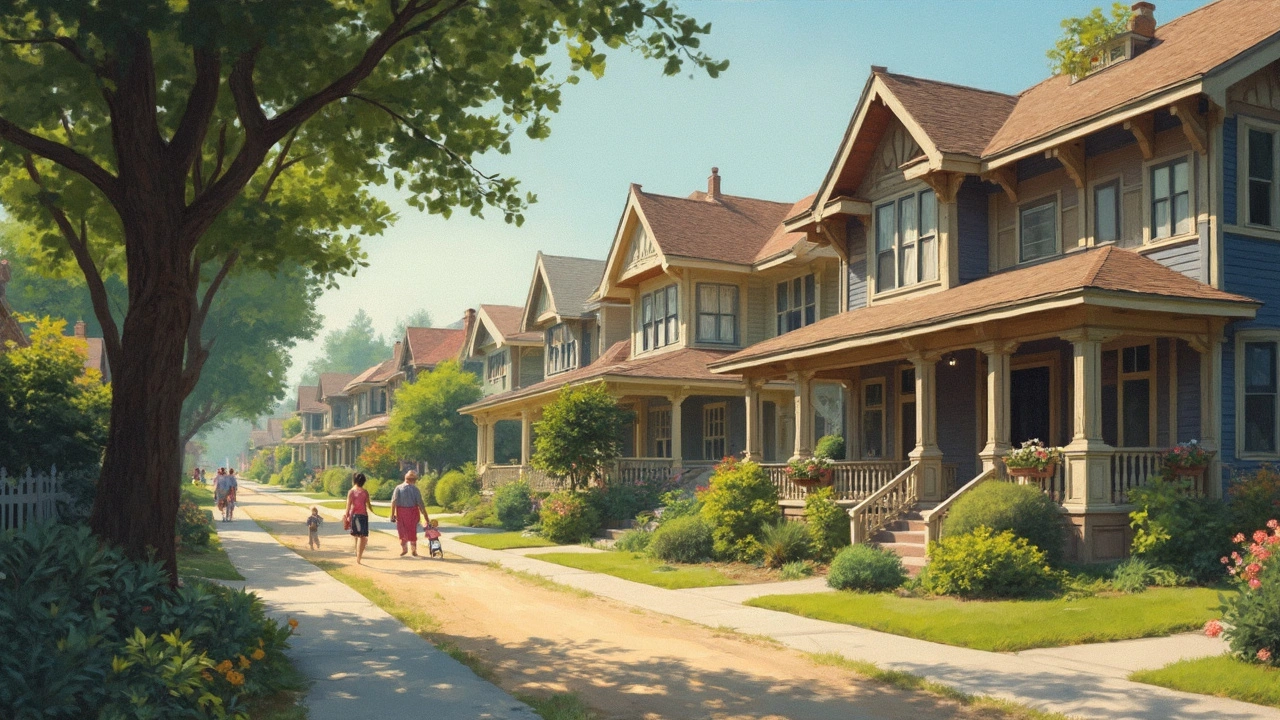American Craftsman Homes: How to Spot, Care For, and Update Them
American Craftsman homes still feel personal and honest. Built mostly between 1900 and 1930, they grew from a reaction against mass-made ornament and a love for visible workmanship. You’ll find them in suburbs and older neighborhoods across the U.S.; they look small but live large because of smart layouts and built-in storage.
The quickest way to spot a Craftsman is to check the roof and porch. Low-pitched gable roofs with wide eaves and exposed rafters are common. Porches often stretch across the front and rest on tapered columns sitting on heavy stone or brick piers. Look for multi-pane windows over a single sash and doors with glass in the upper third. Inside, expect open plans, wide trim, natural woodwork, and built-ins like bookcases, window seats, and substantial fireplaces.
Materials matter. Craftsman homes favor local, honest materials: wood, stone, brick, and stucco used without fancy finishes. That gives a warm, tactile feel and also makes repairs straightforward. Original fir or oak trim, tongue-and-groove ceilings, and wood floors are signs of authenticity. If you see varnished or dark-stained wood, that often means the interior has survived without heavy remodeling.
Restoring or updating a Craftsman needs restraint. Keep visible woodwork, restore original windows when possible, and match new exterior siding to the original profile. Replace only what’s failing. For energy upgrades, add insulation in the attic and fit storm windows to preserve original frames. When you must replace windows, choose historically accurate divided-lite patterns.
Budget-friendly updates that keep the style: refinish hardwood floors, repair porch columns, repaint trim in classic palettes—deep greens, warm earth tones, and cream trims work well. Swap in period-appropriate light fixtures and simple hardware rather than ornate modern pieces. For kitchens and bathrooms, choose shaker-style cabinets, subway tile, and matte-finish fixtures to keep the handcrafted vibe.
Modern needs can be met without erasing character. Add a discreet HVAC system, hide wiring behind trim, and use recessed lighting with wood or plaster ceiling repairs so the fixtures feel built-in. If you need extra space, consider a rear addition that reads clearly as new instead of mimicking original details—this keeps the house honest and protects historic value.
Neighborhood context matters. Craftsman districts often include bungalows from the same era; check local historic surveys before making big changes—some areas have design guidelines or tax incentives for approved restorations. Working with a contractor experienced in old-house repairs saves money and preserves details many homeowners later wish they'd kept.
Owning a Craftsman is owning a style that values craftsmanship and utility. Treat the wood, keep the porch welcoming, and make changes that celebrate the original design. Do that, and the house will keep feeling genuine for decades.
Small details punch above their weight: restore original hardware when possible, use beadboard in bathrooms, and keep porch railings simple. Plan for regular maintenance—clean gutters, repaint every 7–10 years, and check porch piers for settling. If budget allows, hire a preservation-minded architect for major changes; their guidance preserves charm and resale value.

The Rise of American Craftsman Homes: Trends and Transformations
American Craftsman homes are making a comeback, with their unique design features and historical charm captivating a new generation. From their early 20th-century roots to their resurgence in modern home renovations, these homes offer practical benefits along with aesthetic appeal. Learn why homeowners are inspired to bring back Craftsman details and how you can adopt these elements in your renovation projects. Discover tips and ideas for blending traditional Craftsman style with contemporary living.
Read more